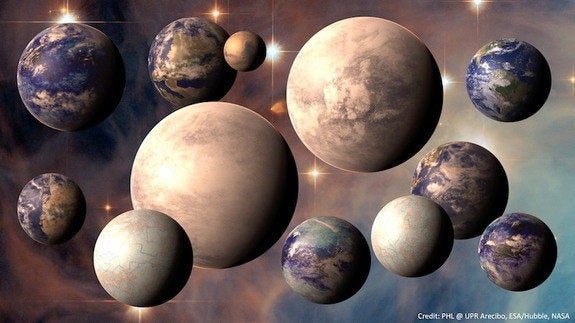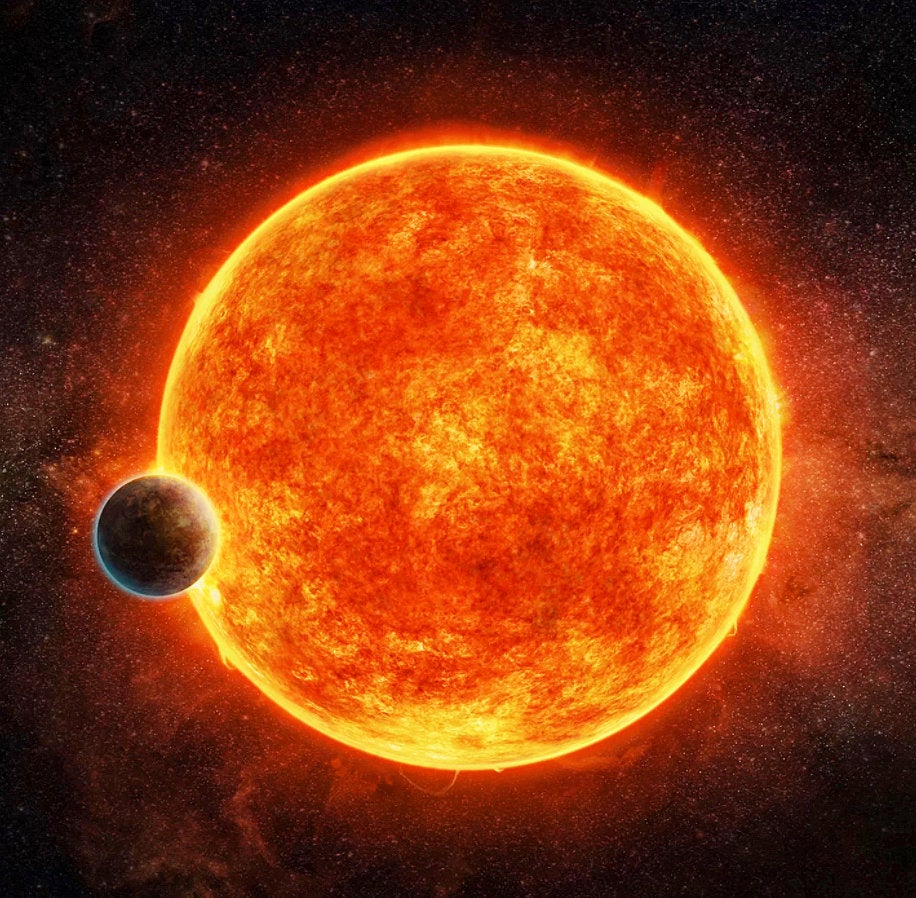By: Elizabeth Howell
Published: 12/06/2012 05:44 PM EST on SPACE.com
A new catalog aims to list all the known planets in the galaxy that could potentially be habitable to life. The count is at seven so far, with many more to come, researchers said.
The online listing, called the Habitable Exoplanets Catalog, celebrated its first anniversary today (Dec. 5). When it was first released last year, it had two potential habitable planets to its name. According to lead researcher Abel Mendez, the team expected to add maybe one or two more in the catalog's first year. The addition of five suspected new planets was wholly beyond anyone's expectations.
"The main purpose is for research, but then I realized that also for the public, it was very important," said Mendez, director of the University of Puerto Rico at Arecibo's Planetary Habitability Laboratory.
"There are many press releases announcing discoveries of habitable planets ... and that is confusing," Mendez told SPACE.com. "So having a catalog that everyone can check what is available right now is useful."
Mendez also said scientists are getting smarter about finding exoplanets, and the pace of discovery is increasing. [Gallery: 7 Habitable Exoplanets]
There are 27 candidate planets waiting for inclusion in the habitable portion of the catalog. Meanwhile, the HARPS (High Accuracy Radial Velocity Planet Searcher) instrument in Chile and orbiting Kepler Space Telescope, among others, are quickly finding new exoplanets every month.
Preliminary parameters for life
Mendez's team principally assesses the potential of life on a planet using three metrics: the variability of energy from the host star that the planet receives, the mass of the planet and the planet's size. Simplistically, bigger gas giants orbiting variable stars are less likely to host life than smaller, rocky planets near stable stars.
Much of the catalog's data come directly from the research teams involved in an exoplanet's discovery. The catalog also includes information from the Extrasolar Planets Encyclopaedia and the NASA Exoplanet Archive.
Mendez cautions that the information is preliminary. So far, most of what we know about exoplanets comes from a simple physical assessment. Much less is known about chemical and biological information.
Also, sometimes a planet is found that can't be confirmed through independent observation. One famous example is Gliese 581g, which was discovered by one team but could not be found by another team using a different instrument. New datasets have been released, but there still is a debate. Mendez calls these situations "tricky."
"There are two versions of the story, and the two versions can be supported by data," he said. "But because we think that there's still the sense that planet could exist, we are including it [as a candidate]."
Mendez initially created the database to help with his research. He says he was honored by the reaction from the public and research community in the months after its release.
In the first two days of its existence, the catalog attracted 100,000 views — "for a research page, that's good," Mendez joked. It now consistently garners 10,000 to 30,000 views a month.
He's been approached at conferences and praised for his work, and the NASA Astrobiology Institute has told him the catalog is a useful tool. "It was more than I expected," he said.
Mendez has been aggressive with public outreach, with his team building mobile phone apps as well as a "periodic table" of exoplanets to drum up interest.
Meanwhile, more work on the catalog beckons. The team expects to add new models in the coming year, which will affect the measurements on objects already in the catalog.
But it will be discoveries, rather than mathematics, that will drive the pace of change, the team added in a statement.
"A true Earth analog or a potentially habitable exomoon would be big discoveries," it read. "Certainly, this was the right time to start mapping the habitable universe around us."
Follow Elizabeth Howell @howellspace, or SPACE.com @Spacedotcom. We're also on Facebook and Google+.
Copyright 2012 SPACE.com, a TechMediaNetwork company. All rights reserved. This material may not be published, broadcast, rewritten or redistributed.
Our 2024 Coverage Needs You
It's Another Trump-Biden Showdown — And We Need Your Help
The Future Of Democracy Is At Stake
Our 2024 Coverage Needs You
Your Loyalty Means The World To Us
As Americans head to the polls in 2024, the very future of our country is at stake. At HuffPost, we believe that a free press is critical to creating well-informed voters. That's why our journalism is free for everyone, even though other newsrooms retreat behind expensive paywalls.
Our journalists will continue to cover the twists and turns during this historic presidential election. With your help, we'll bring you hard-hitting investigations, well-researched analysis and timely takes you can't find elsewhere. Reporting in this current political climate is a responsibility we do not take lightly, and we thank you for your support.
Contribute as little as $2 to keep our news free for all.
Can't afford to donate? Support HuffPost by creating a free account and log in while you read.
The 2024 election is heating up, and women's rights, health care, voting rights, and the very future of democracy are all at stake. Donald Trump will face Joe Biden in the most consequential vote of our time. And HuffPost will be there, covering every twist and turn. America's future hangs in the balance. Would you consider contributing to support our journalism and keep it free for all during this critical season?
HuffPost believes news should be accessible to everyone, regardless of their ability to pay for it. We rely on readers like you to help fund our work. Any contribution you can make — even as little as $2 — goes directly toward supporting the impactful journalism that we will continue to produce this year. Thank you for being part of our story.
Can't afford to donate? Support HuffPost by creating a free account and log in while you read.
It's official: Donald Trump will face Joe Biden this fall in the presidential election. As we face the most consequential presidential election of our time, HuffPost is committed to bringing you up-to-date, accurate news about the 2024 race. While other outlets have retreated behind paywalls, you can trust our news will stay free.
But we can't do it without your help. Reader funding is one of the key ways we support our newsroom. Would you consider making a donation to help fund our news during this critical time? Your contributions are vital to supporting a free press.
Contribute as little as $2 to keep our journalism free and accessible to all.
Can't afford to donate? Support HuffPost by creating a free account and log in while you read.
As Americans head to the polls in 2024, the very future of our country is at stake. At HuffPost, we believe that a free press is critical to creating well-informed voters. That's why our journalism is free for everyone, even though other newsrooms retreat behind expensive paywalls.
Our journalists will continue to cover the twists and turns during this historic presidential election. With your help, we'll bring you hard-hitting investigations, well-researched analysis and timely takes you can't find elsewhere. Reporting in this current political climate is a responsibility we do not take lightly, and we thank you for your support.
Contribute as little as $2 to keep our news free for all.
Can't afford to donate? Support HuffPost by creating a free account and log in while you read.
Dear HuffPost Reader
Thank you for your past contribution to HuffPost. We are sincerely grateful for readers like you who help us ensure that we can keep our journalism free for everyone.
The stakes are high this year, and our 2024 coverage could use continued support. Would you consider becoming a regular HuffPost contributor?
Dear HuffPost Reader
Thank you for your past contribution to HuffPost. We are sincerely grateful for readers like you who help us ensure that we can keep our journalism free for everyone.
The stakes are high this year, and our 2024 coverage could use continued support. If circumstances have changed since you last contributed, we hope you'll consider contributing to HuffPost once more.
Already contributed? Log in to hide these messages.

